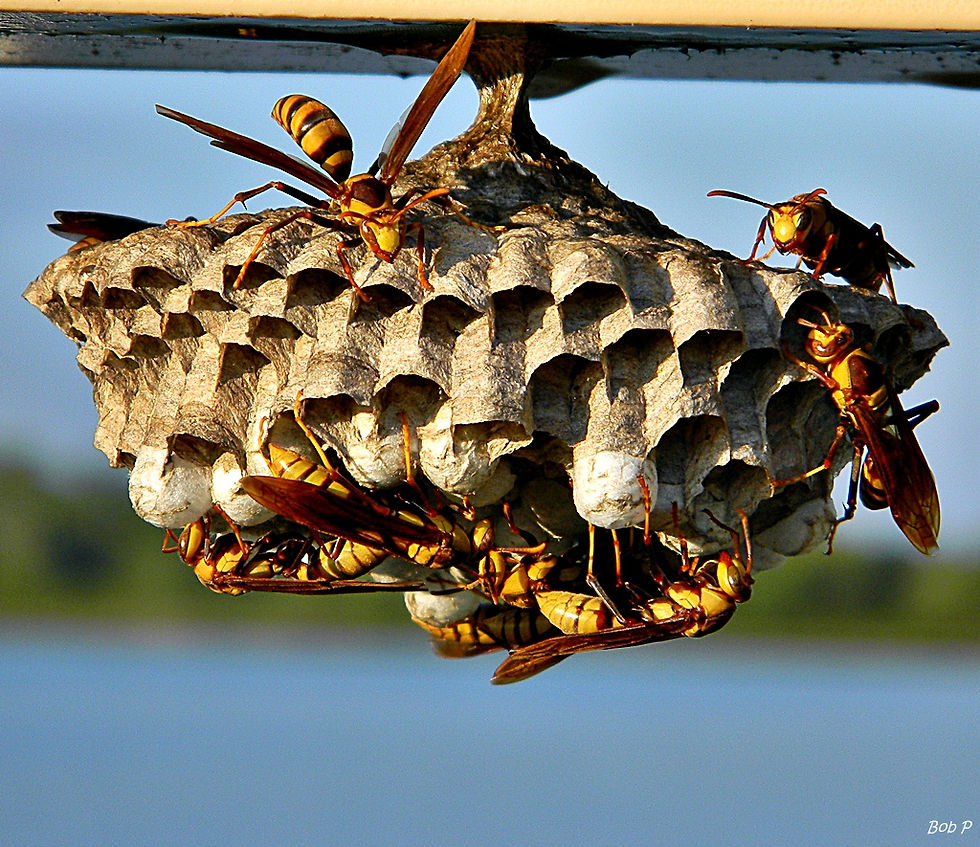It’s that time of year. The videos are posted. They are definitely hitting most of my social media feeds.
Yep, it’s wasp season. And people are getting stupid.
I get it, people think they can DIY pest problems. That’s why tons of products are available to buy from your local big box store. The last EPA report showed Americans buying more than $2 BILLION on pesticides and they think that is an underestimate. That does not include professionals buying products. Here’s what I’m seeing this year.
Early on, it was the gasolene trick. If you missed this, it was putting a glass jar with a half cup or so of gas in the bottom, and putting it over a hanging wasp nest. It works (surprising, I know). The wasps die and fall into the gas. It is because of the gas fumes. It is essentially fumigating that nest and as the wasps start to asphyxiate, they fall into the liquid gas and die. This works fine for small hanging nests because you can get the jar completely over it and “seal” the jar to the ceiling. It’s not my preferred method, but it's not the worst thing to do.
Now, the latest trend is to get a bag and either grab the nest or cut it off and drop it into a bag. Could you safely do this? Maybe. Is it a good idea? Probably not. In theory, it's fine: get a thick bag, carefully put it over the hanging nest, and detach it from its hanging point. Realistically this is a recipe for disaster.
Wasp colonies at this point in the season are pretty large. A mature paper wasp (aka umbrella wasp) nest can hold hundreds of wasps. Bald faced hornets, the ones that build enclosed aerial paper nests can have up to 700 wasps at the end of the season. That’s a lot of really pissed off wasps coming at the person who decided to try this.
Thinking of the biology of our aerial wasps, it’s astonishing that people think they should take care of this problem in the middle of the day. First, the wasps are all very awake. They are taking care of the still developing young, feeding the queen, and out foraging. They are alert and ready to defend. Wasp nests need to be treated after dark or as close to it as possible. Not only are the wasps less active, just about all of them are back in the nest. Treat a colony in the middle of the day and you could have a few hundred adults still out and foraging. Those will have to be dealt with over the next few days and they won’t be happy they can’t find their home.
I get it though, for many professionals, you get the call at 10am and make it there just after noon. Your customer doesn’t want to hear that someone needs to come back after hours and they need to pay more. As much as possible, it’s great if you can schedule these for first thing in the morning. It’s not always possible. In these cases, make sure to at least have a bee veil to protect your face and come prepared with any other PPE as you need and an adequate amount of pesticide to sufficiently treat. Of course, let the customer know that they are going to be dealing with the stragglers for a few days more.
End of the season treatment is hazardous for another reason. Wasps get a little drunk. Look, it’s the end of a long season, they’ve worked hard, been bossed around by the queen for months, and now they want to kick back and relax. When the queen stops laying eggs and there are just a few larvae that will develop into next year’s royalty, the adult wasps are now foraging for just themselves. While there are still flowers, there is a proliferation of fruits that have over-ripened and dropped off the plant. Those fruits are now starting to ferment. We now that those who have over imbibed a bit, they can bump into things and get a bit belligerent. Those tipsy wasps are more likely to sting now. (they are also happy to sip your drink as you sit outside)
Using wasp spray has its own perils. The biggest mistake I see people making (usually non-pros) is standing too far away from the nest when applying. They get a little bit of product that hits the nest which is just enough to enrage the wasps in that nest. READ THE LABEL! The label will tell you how close you need to be for effective treatment. Remember too that if it says “treat’s up to 12 feet”, that’s not 12 feet laterally – it’s on the diagonal (unless that nest is at eye level). Just because you are 12 feet from the bottom of the tree, the nest is hanging 10 feet up. If you remember basic math, that’s actually over 19 feet.
The second big mistake is not having enough treatment. As mentioned previously, these nests are BIG. Getting even half the nest leaves a lot of individuals livid with the extermination attempts. Cue the stings. Whatever you think you need, get extra. Just in case.
Wasps can sting multiple times, unlike bees. Once their alarm pheromone goes out, you are the identified victim and they will respond in mass. It’s not worth the risk. Unless you are going for those views on social media but I really wouldn’t suggest it. If your wasp treatment protocols haven’t been updated recently and you want training, we do that. Don’t get stung by bad reviews because treatment failed, contact us.
Lagniappe - hold my beer
Urban pest consulting









Comments